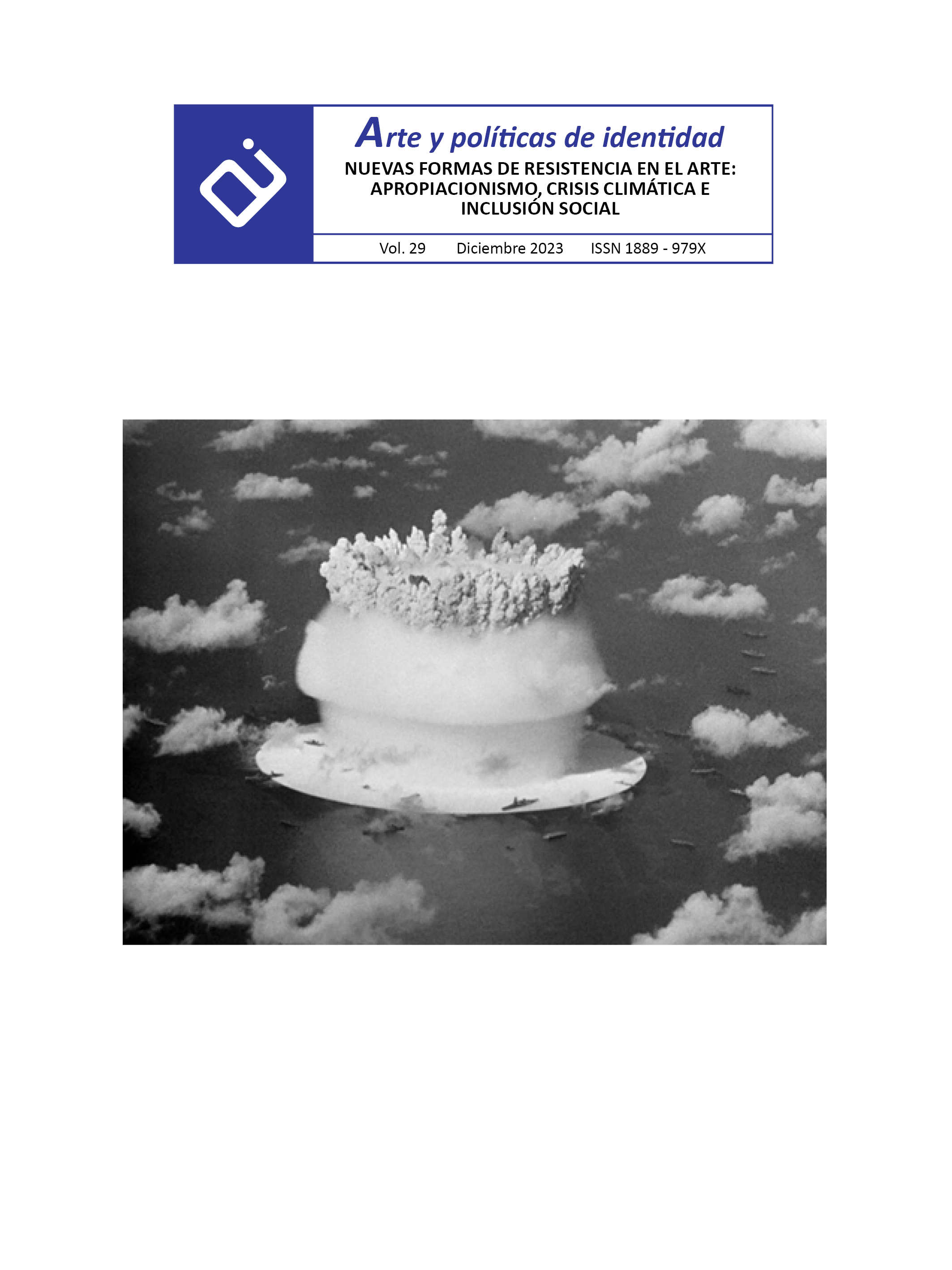Battlefield Expansion. War In Experimental Cinema and Video Creation
Abstract
Experimental cinema and video creation propose formal and ideological strategies that contribute to debating, in audiovisual terms, such a delicate subject as war. The filmmakers and video creators who make pieces about armed conflicts “mistrust the images”, question their conventions and subvert the original messages generated by the mass media. In artistic contexts, there are critical readings regarding audiovisual content of a warlike nature, initially distributed by television channels or commercial cinematographic exhibition circuits. Questioning the credibility and semantic value of this type of moving images is the starting point for artists such as Bruce Conner, Aernout Mik and Harun Farocki. They expand the aesthetic possibilities of the medium to broaden its theoretical foundations and ethical codes. Deconstructing past materials and giving new meaning to pre-existing images of war are common resources of some creators who counteract spectacularism with disassembly. The works analyzed here are formal manipulations and semantic deviations that promote a critical awareness of the military iconography. The iconoclastic character of the works reveals a desire to expand this dialectical battlefield.
Downloads
-
Abstract354
-
pdf (Español (España))223
References
Altman, R. (2000). Los géneros cinematográficos. Paidós.
Altares, G. (1999). Esto es un infierno. Los personajes del cine bélico. Alianza.
Baudrillard, J. (1991). La guerra del Golfo no ha tenido lugar. Anagrama.
Bonet, E. (Ed.) (1993). Desmontaje: film, vídeo/apropiación, reciclaje. IVAM.
Barenblit, F. (Ed.) (2012). Aernout Mik. CA2M.
Crusells, M. (2000). La Guerra Civil española: cine y propaganda. Ariel.
da Costa, M. (2014). Ideología y propaganda en el cine del Tercer Reich. Comunicación social.
Dols, J. (1978). Historia del audiovisual magnético televisivo: Televisión, TV, vídeo. En E. Bonet, J. Dols, A. Mercader y A. Muntadas (1980). En torno al vídeo. Gustavo Gili. 30-100.
Farocki, H. (2015). Desconfiar de las imágenes. Caja Negra.
Leighton, T. (Ed.) (2008). Art and the Moving Image: A Critical Reader. Tate Publishing.
MacDonald, S. (2020). Recent Archival Engagements with the War to End All Wars. Found Footage Magazine, 6, 44-61.
Mayer, S. y Oroz, E. (Ed.) (2011). Lo personal es político: feminismo y documental. Gobierno de Navarra / Punto de Vista.
Noordegraaf, J. (2012). Iterating Footage and the Memory of War. En A. Bordina, S. Campanini y A. Mariani (Eds.), The Archive (pp. 265-272). Forum.
Rothermel, D. (2010). Anti-War War Films. En A. Fitz-Gibbon (Ed.), Resisting War, Educating for Piece (pp. 75-105). Rodopi.
Serra, T. (2018). Abrir la visión. La imagen como velo. En P. Ortuño (Ed.) La imagen pensativa. Ensayo visual y prácticas contemporáneas en el estado español. 16 miradas al videoarte (pp. 77-106). Brumaria.
Sperling, D., & Santos, F. L. de S. (2006). Atenção: A percepção requer empenho. Entrevista com Antoni Muntadas. Risco Revista De Pesquisa Em Arquitetura E Urbanismo, 4, 124-148.
https://doi.org/10.11606/issn.1984-4506.v0i4p124-148
Steyerl, H. (2022). Arte y guerra. New Left Review, 133/134, 219-224.
Turvey, M. (2010). Bruce Conner and the Power of Repetition. En G. Matt y B. Stefem. (Eds.), Bruce Conner. The 70’s (pp. 64-74). Ursula Blickle Stiftung.
Virilio, P. (1986). War and cinema. The Logistics of Perception. Verso.
Virilio, P. (1999). El Cibermundo, la política de lo peor. Cátedra.
Wees, W. (1993). Recycled Images. The Art and Politics of Found Footage Films. Anthology Film Archives.
Copyright (c) 2023 Servicio de Publicaciones de la Universidad de Murcia

This work is licensed under a Creative Commons Attribution-NonCommercial-NoDerivatives 4.0 International License.
Works published in this journal are subject to the following terms:
- The Service of Publications from the University of Murcia (publishing house) keeps the published works’ copyrights, and favors and allows the reuse of these works under the license indicated in point 2.
- Works are published in the journal’s online edition under the license Creative Commons Reconocimiento-NoComercial-SinObraDerivada 3.0 España(texto legal). They can be copied, used, disseminated, transmitted and publicly exhibited, as long as: i) the author and original source of publication are cited (journal, publishing house and work’s URL); ii) they are not used for commercial purposes; iii) the existence and specifications of this license are mentioned.
3. Conditions for auto-file. It is allowed and encouraged that authors share electronically their pre-print version (the pre-reviewed version) and /or post-print version (the reviewed and accepted version) of their Works before the publication, since it promotes its circulation and dissemination. RoMEO color: green.










